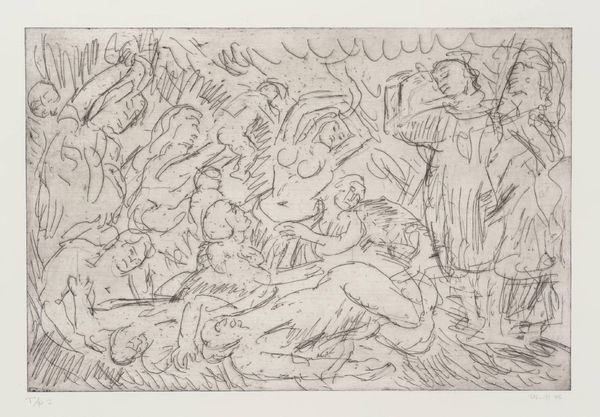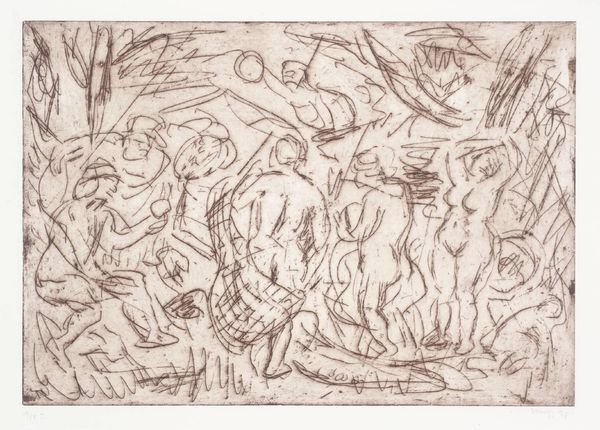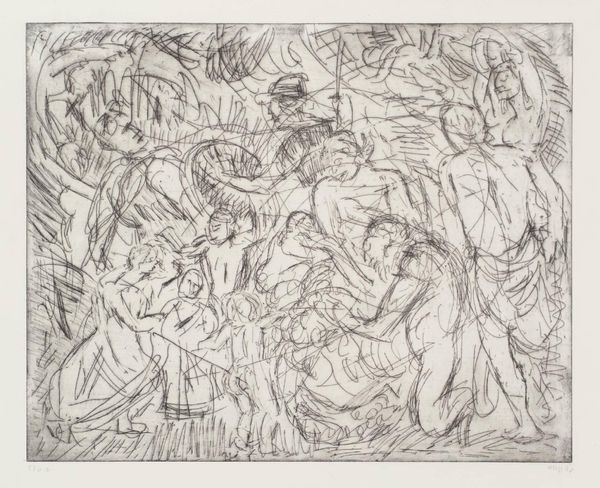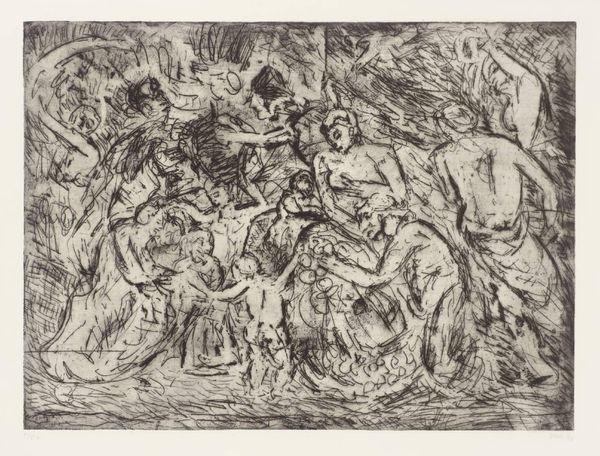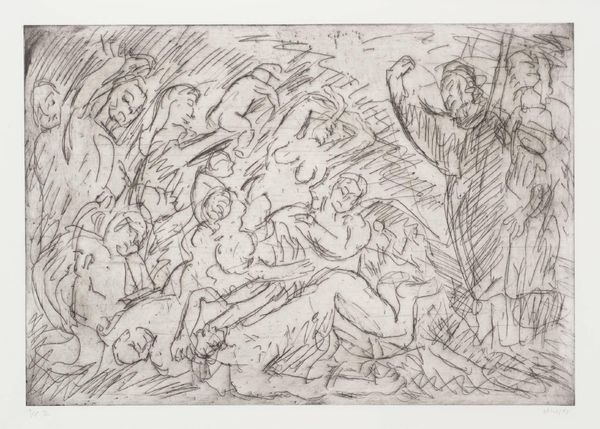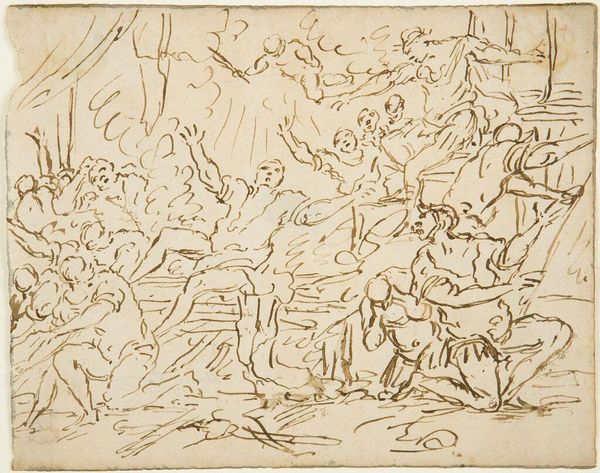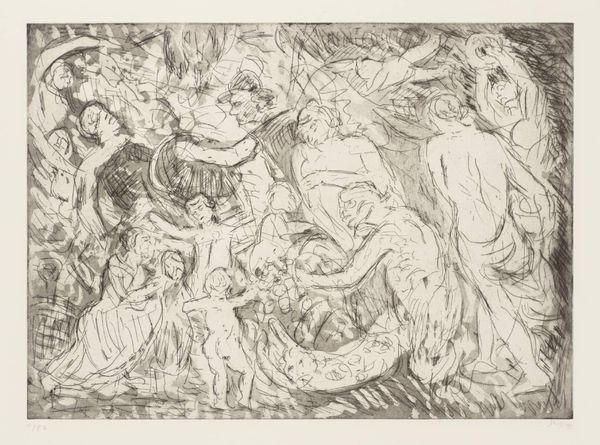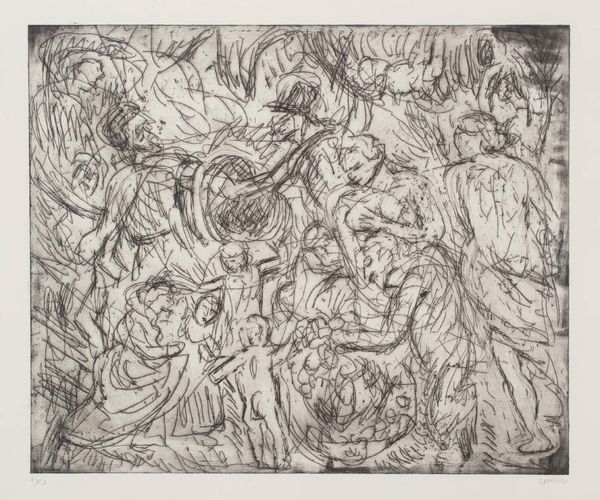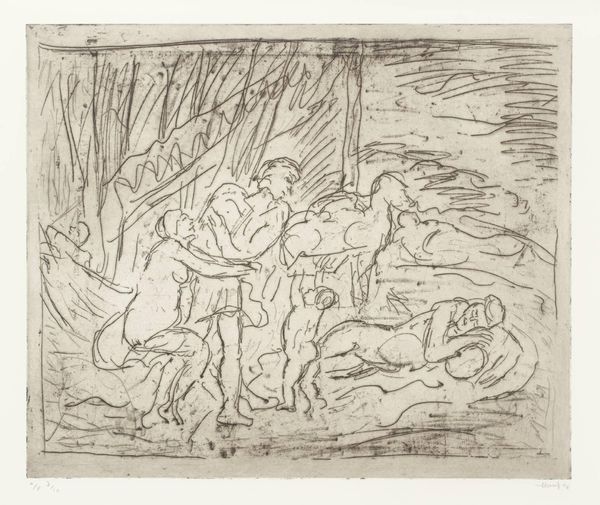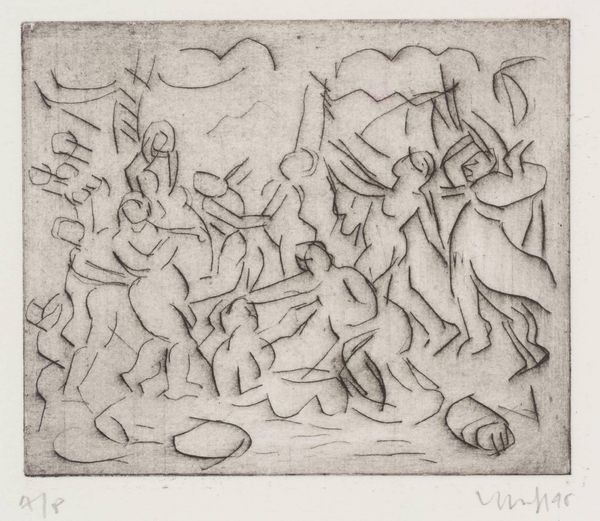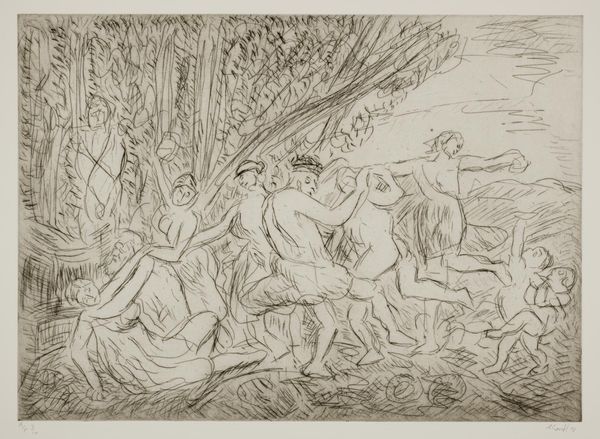
Dimensions: image: 408 x 305 mm
Copyright: © Leon Kossoff | CC-BY-NC-ND 4.0 DEED, Photo: Tate
Curator: Leon Kossoff, born in 1926, created this etching, "Minerva Protects Pax from Mars," now held at the Tate. Editor: My first impression is chaos, but a purposeful chaos. The frenetic lines feel raw, immediate, like a quickly captured dream. Curator: Yes, the imagery evokes a classical struggle. Minerva, goddess of wisdom, shielding Pax, peace, from Mars, the god of war. It taps into a deep well of cultural anxieties about conflict. Editor: And look at the hatching technique. You can almost feel the pressure of the tool, the artist grappling with the material. It's not just depiction; it’s an act of physical labor imprinted on the plate. Curator: Absolutely. These figures, though sketched, carry immense symbolic weight, reaching back through centuries of artistic and literary interpretations of these archetypes. Editor: The limited tonal range focuses us on the linework itself, the graphic quality. This feels less like a finished image and more like a stage in a longer process of artistic production. Curator: It's a powerful distillation of a timeless conflict. Editor: Seeing the process this way makes me think about our own struggles to find peace amid turmoil. A work of great immediacy.
Comments
tate 8 months ago
⋮
http://www.tate.org.uk/art/artworks/kossoff-minerva-protects-pax-from-mars-peace-and-war-2-p11701
Join the conversation
Join millions of artists and users on Artera today and experience the ultimate creative platform.
tate 8 months ago
⋮
This print is one of many etchings executed by Leon Kossoff in response to, and literally in the presence of, oil paintings by old masters; in this case Minerva Protects Pax from Mars (‘Peace and War’), 1629-30, by Peter Rubens (1577-1640), owned by the National Gallery, London. Tate owns five prints by Kossoff after this Rubens painting (Tate P11700-4). The artist’s ability to explore a number of separate responses while making drawings and prints from a single subject is illustrated in these etchings. This print was never published as an edition; Tate owns the second trial proof.
